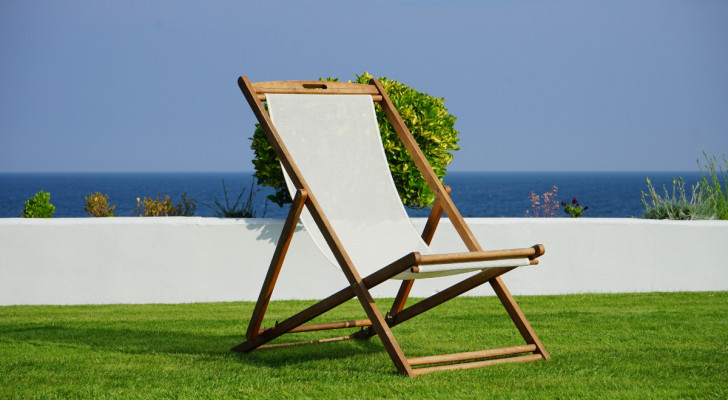How to clean outdoor terracotta floors and make them look as good as new again
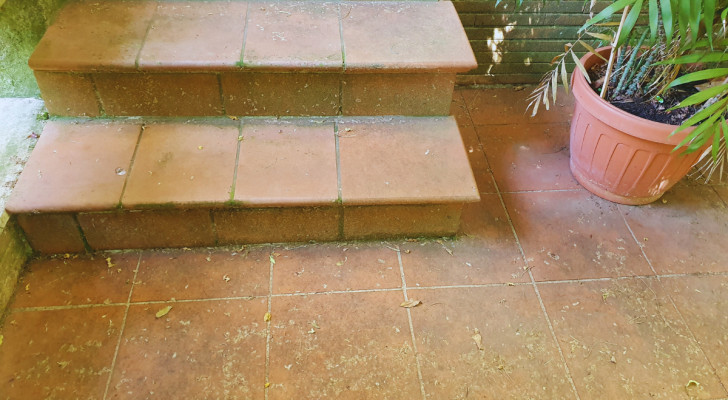
Cleaning outdoors terracotta floors is not difficult, but it is best to do it with the right products, ie. those that are effective but not overly "aggressive". And even if outdoors terracotta flooring is typically more robust than that used indoors, it can still be damaged by using the wrong products/techniques on it.
The most common forms of dirt that appear on outdoors terracotta flooring are: white saltpeter stains; "common" black/dark dirt and grime; and organic stains (caused by moss, lichen or algae).
1. Cleaning white, saltpeter stains from terracotta
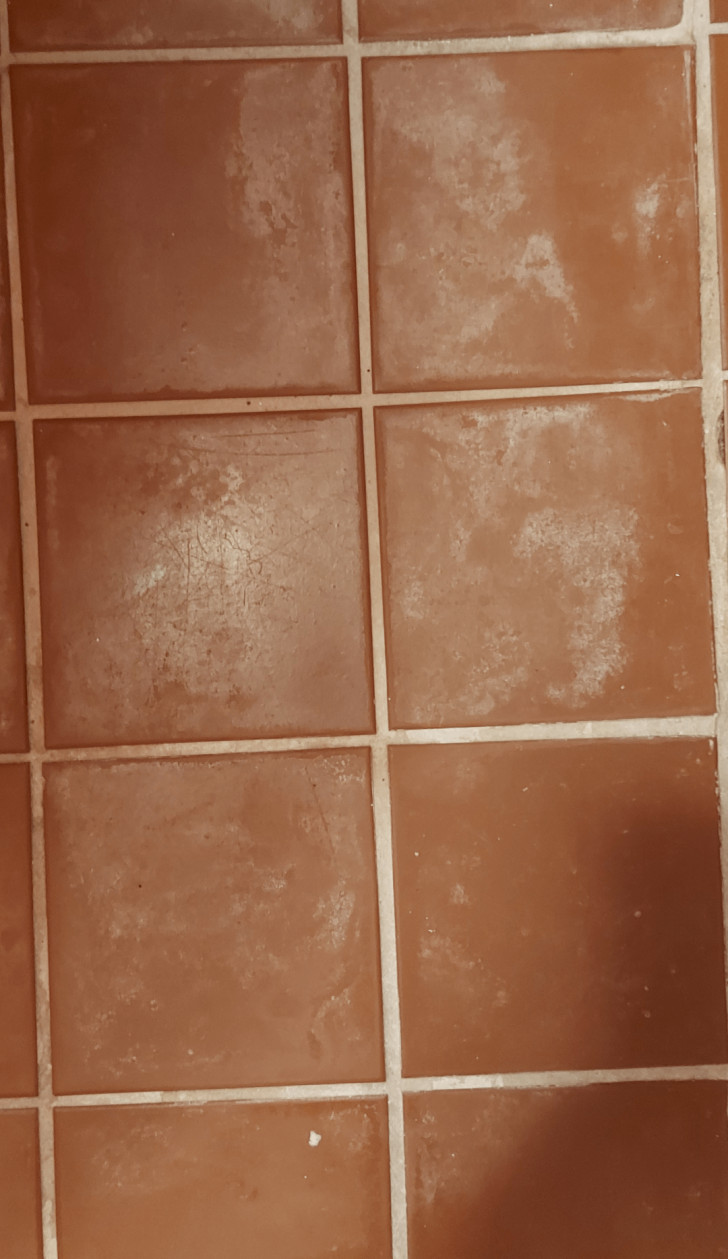
Saltpeter stains on terracotta form due to the efflorescence process, where soluble salts present in the soil, water, or grouting dissolve in moisture and move to the surface of the terracotta. As the water evaporates, it leaves behind white deposits of salts, including potassium nitrate (saltpeter). This usually occurs in humid environments or areas with poor drainage, where capillary action draws the salts up through the porous terracotta material. The resulting white stains can indicate underlying moisture problems and may require both surface cleaning and addressing the moisture source to prevent recurrence.
So, how to deal with this problem? Rather than resorting to DIY solutions, it is advisable to use special detergents for terracotta that have an acidic components in their formulas. Usually, these are sprinkled on the floor, scrubbed on the suface with a sponge, and then rinsed away thoroughly and carefully.
2. How to remove regular, dark dirt stains from terracotta floors
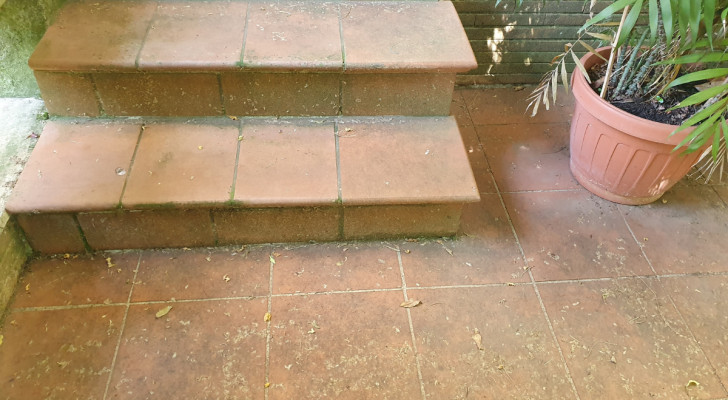
Creativo
Outdoor flooring will always get dirty from exposure to dirt, dust, leaves, pollen and other garden debris. Food and drink can also get dropped or spilled on terracotta flooring when entertaining outdoors, for example.
If the stains are acidic in nature, you can use:
- Alcohol vinegar: mix this with warm water - 1/3 vinegar and 2/3 water, rub on the stains, then rinse off thoroughly;
- Alternatively, use baking soda: sprinkle this on a damp sponge, rub on the stains and then rinse off thoroughly.
For general cleaning, you can simply add a glass of vinegar to a bucket of warm water, and then add a level teaspoon of Marseille soap (or some other delicate soap), and scrub the floor with a brush before rinsing off thoroughly.
3. How to remove moss, algae or mold from terracotta floors
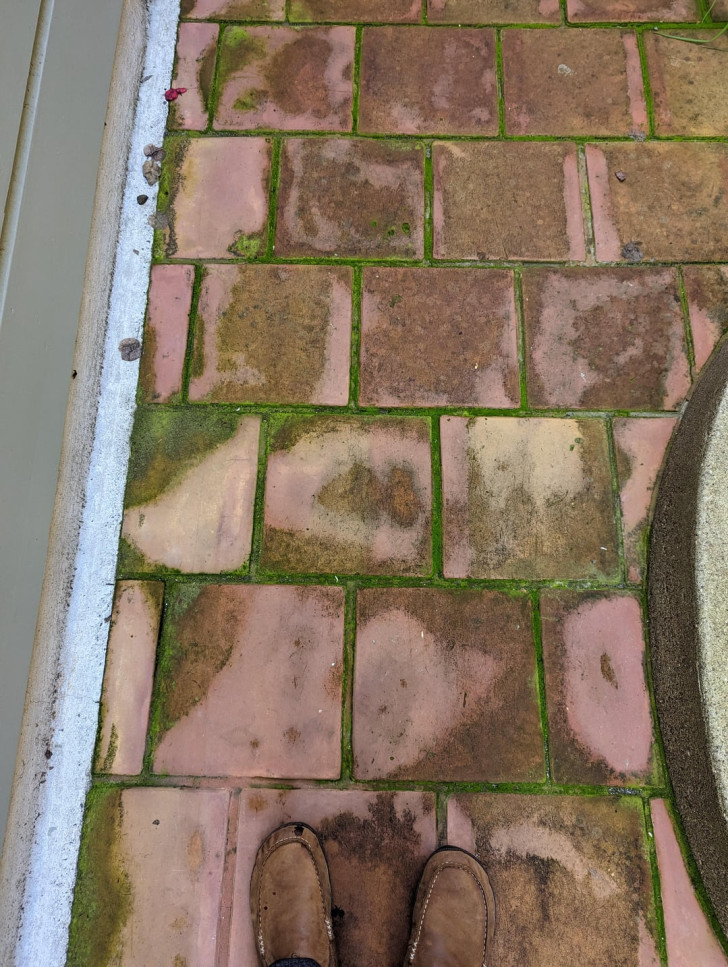
The best way to eliminate this organic dirt is to remove it manually using suitable tools (such as metal scrapers). Where this problem persists or reoccurs frequently, it is best to also put down special anti-mold/moss/lichen products (usually in liquid form). These products are designed specifically for porous, outdoor, terracotta floors, and should be administered as per the manufacturers' instructions.
Always be careful using these products if the flooring borders your flowerbeds and other greenery: when rinsing away, the chemical components of these products can end up in the surrounding soil and seriously injure nearby plants. Use brushes, brooms or mops to channel the run-off from your rinsing to another, less critical spots.



